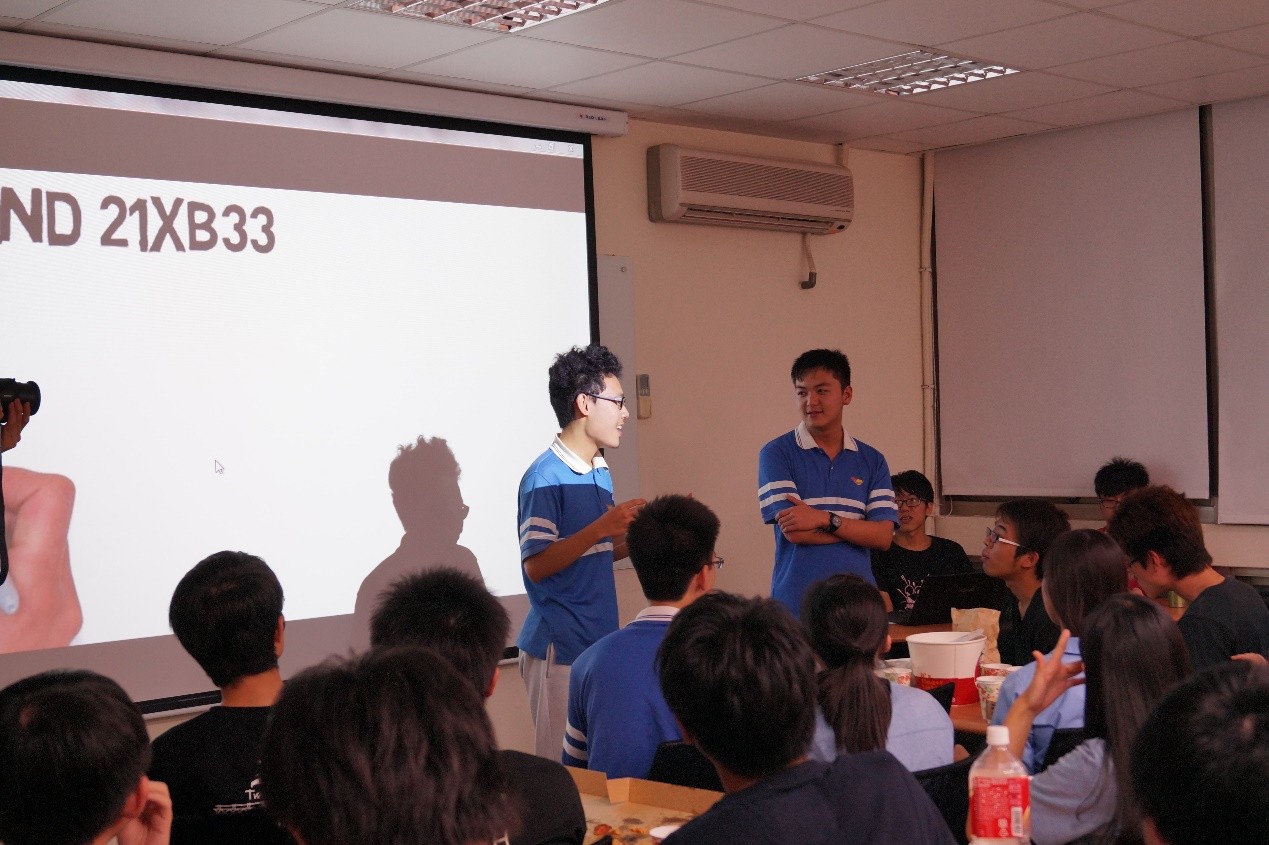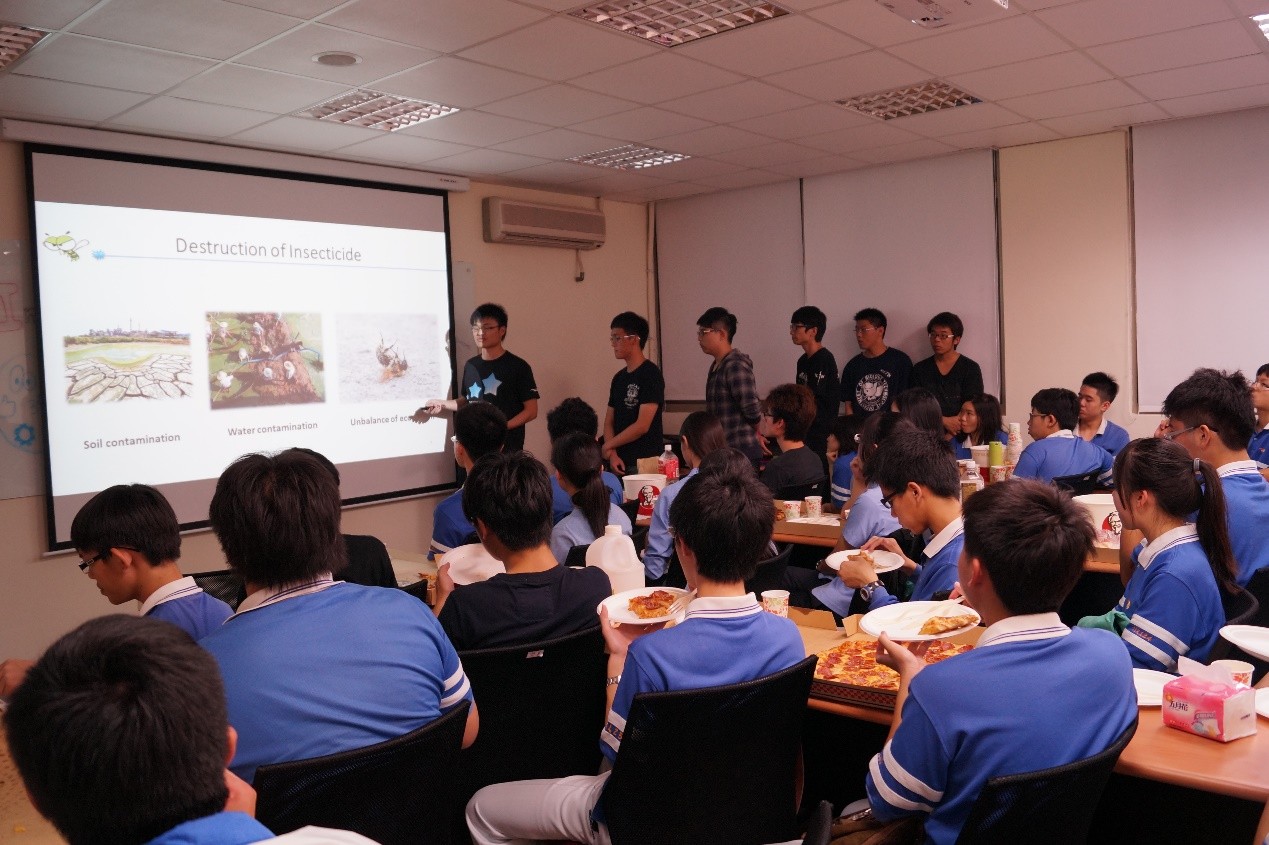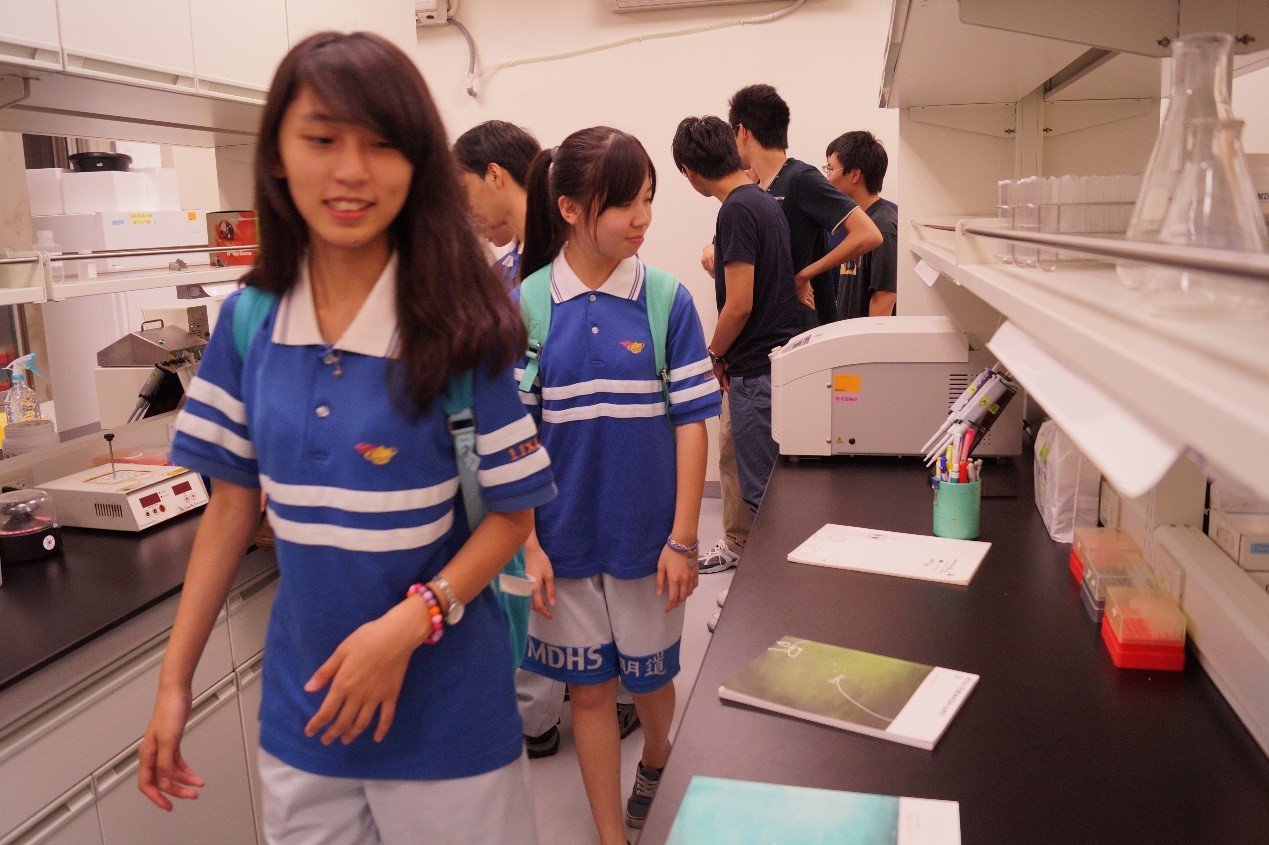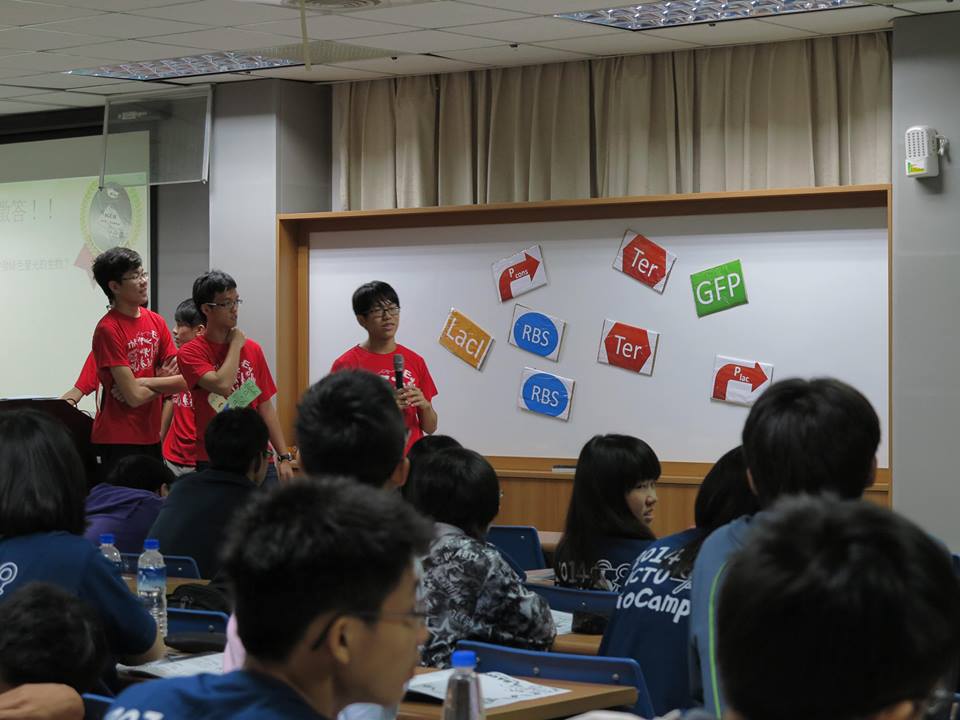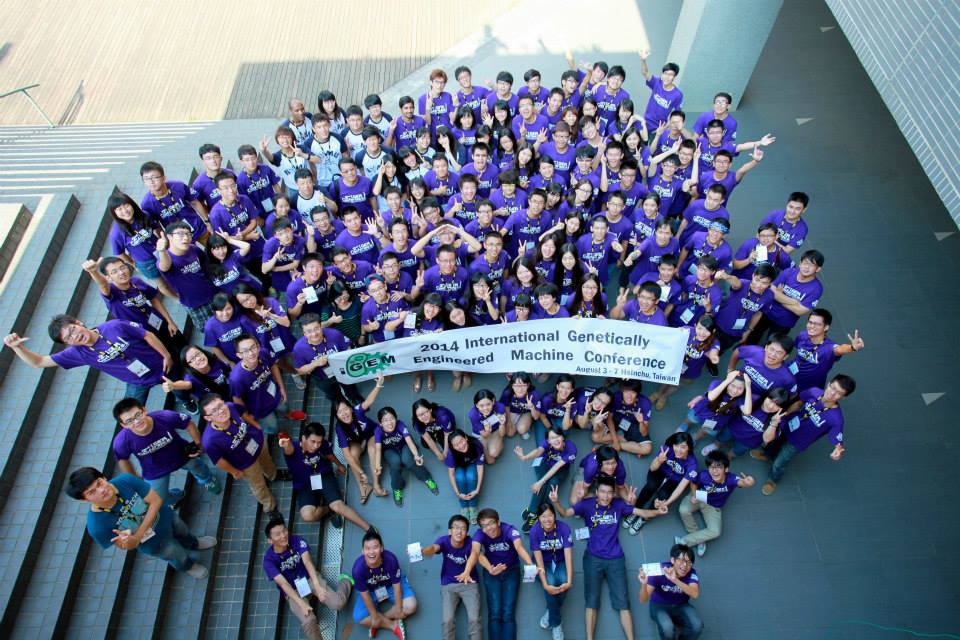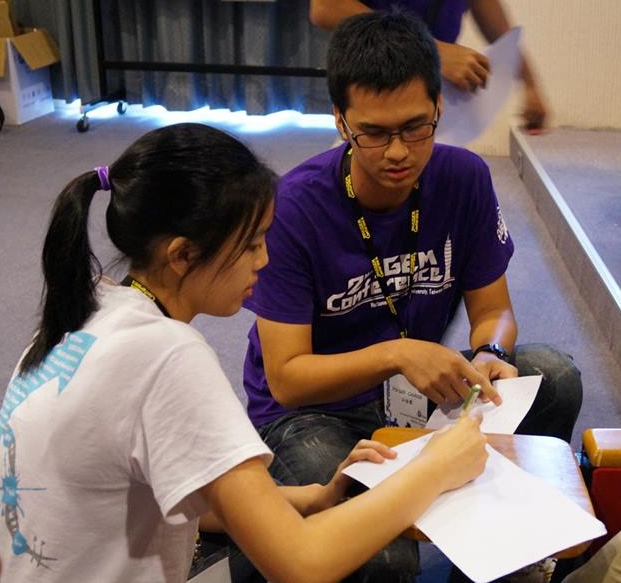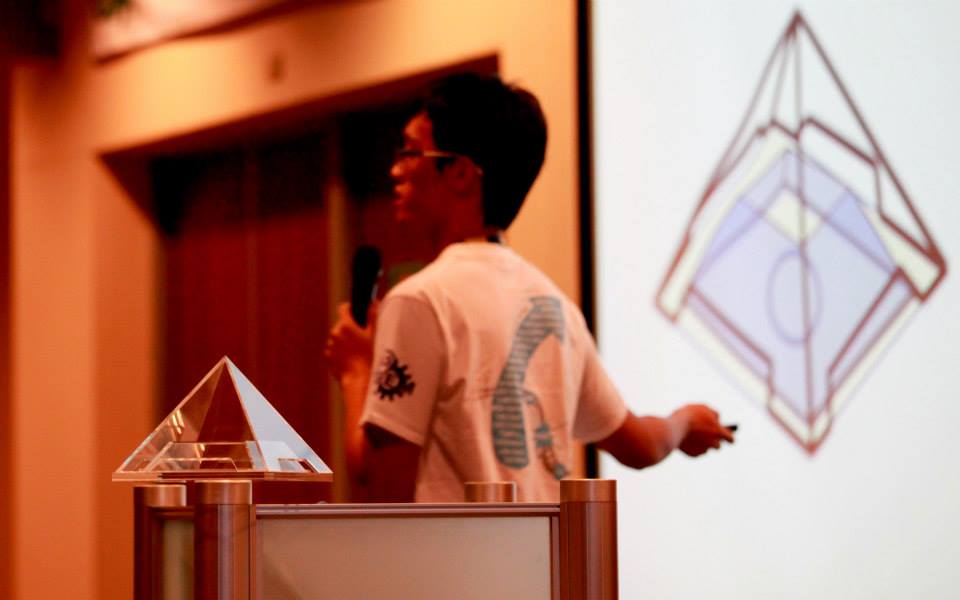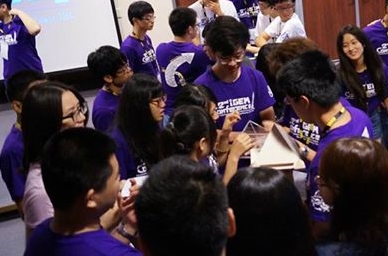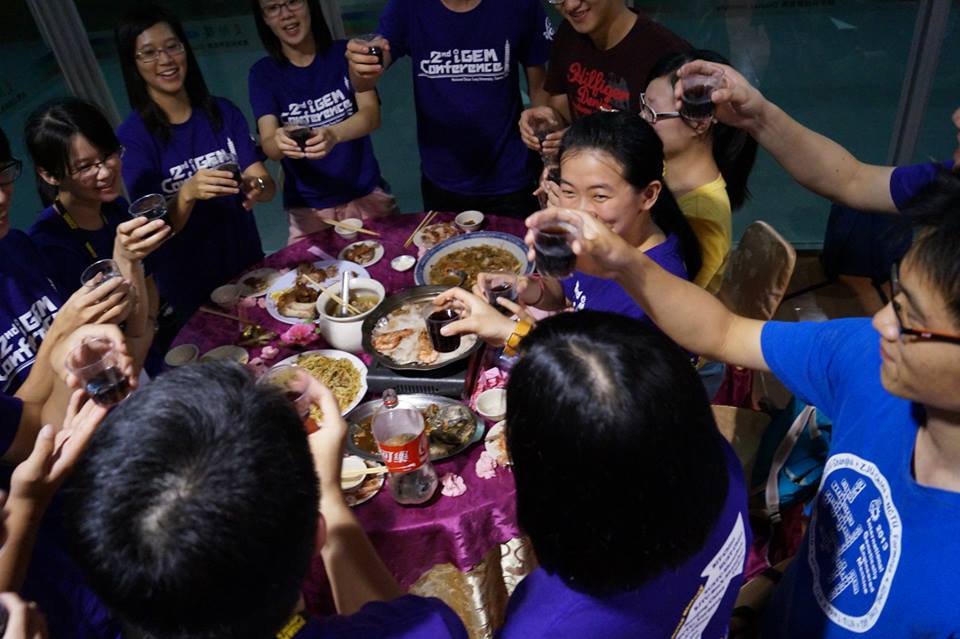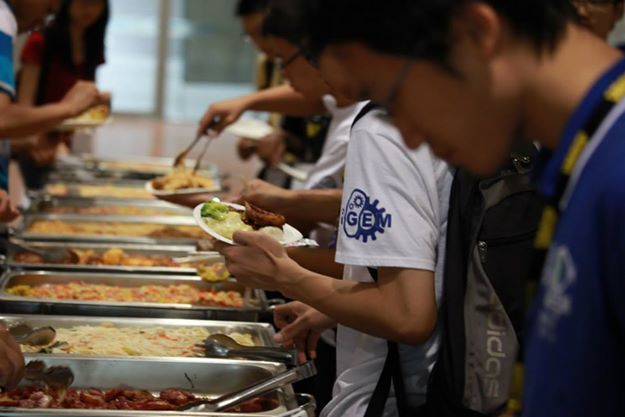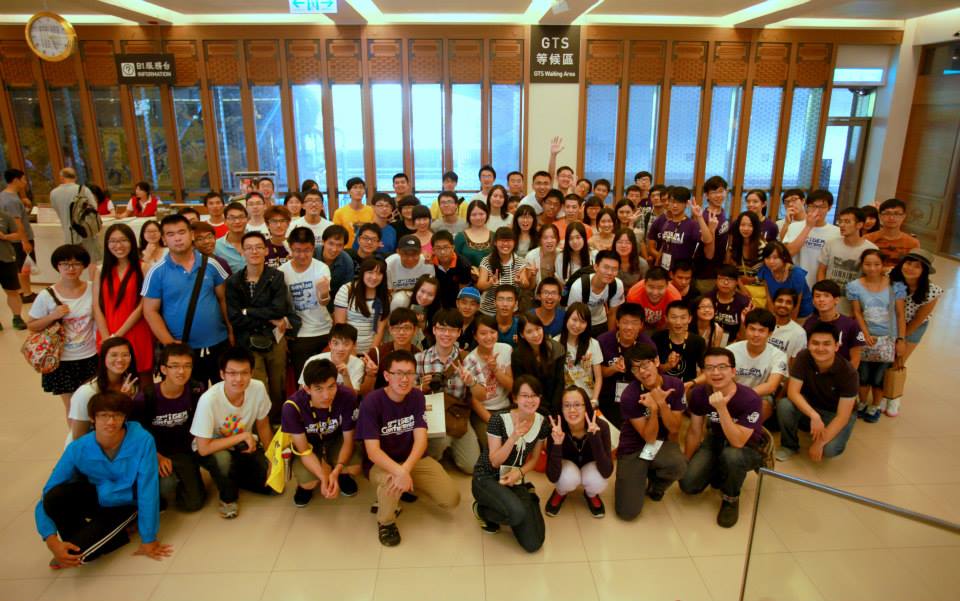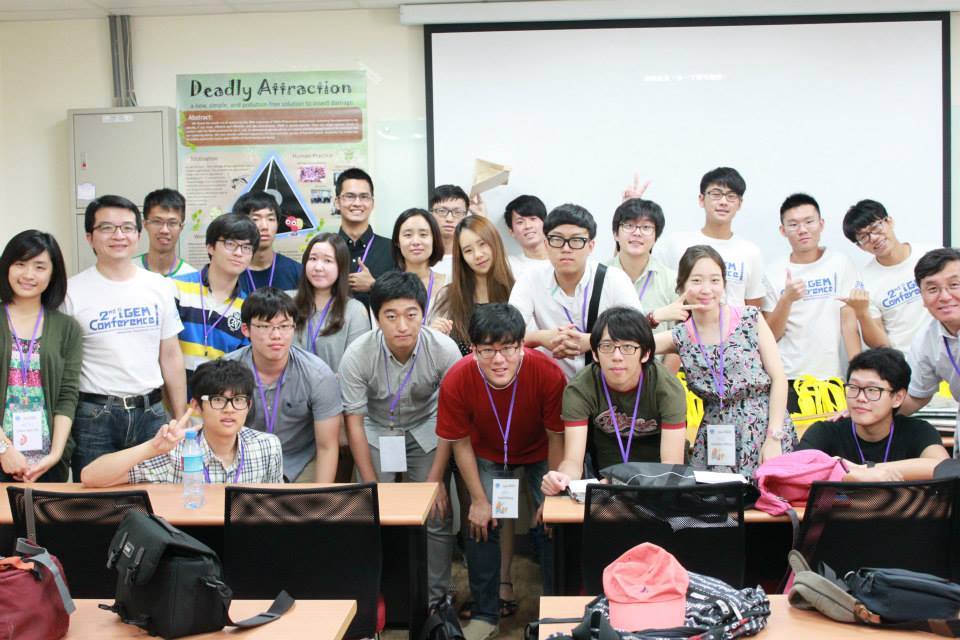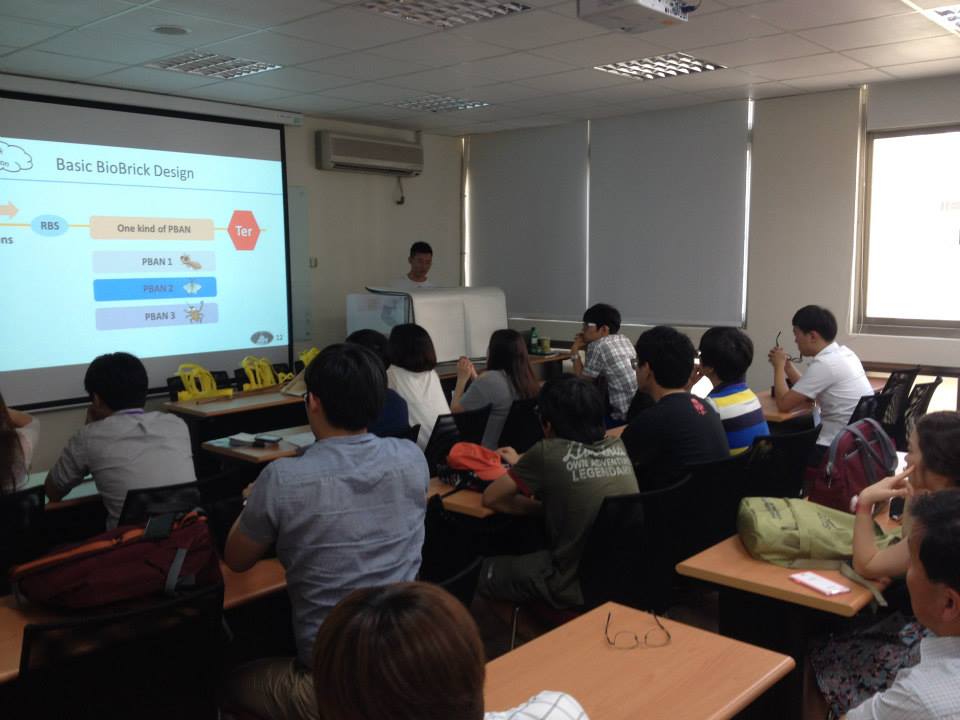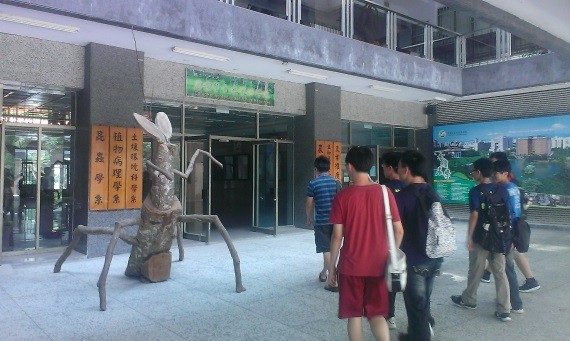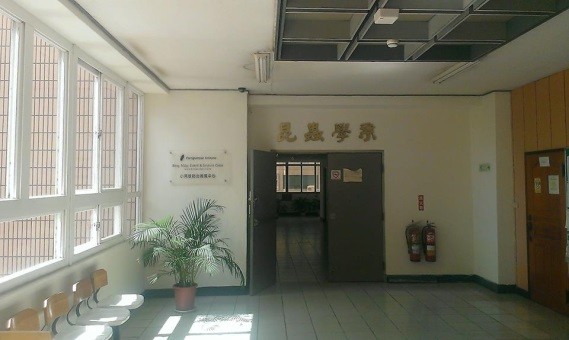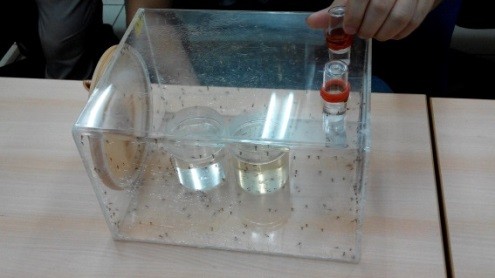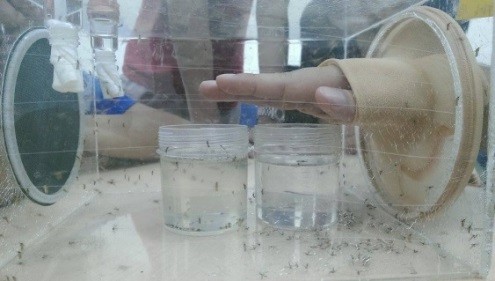Team:NCTU Formosa/human practice
From 2014.igem.org
Contents |
MDHS-conference
We invited Mingdao High school iGEM team to exchange ideas with us. We also held a pizza party to enhance more fun in this event.
We asked Mingdao high school to give a brief introduction to their project-Odor Let It Die. It’s really an interesting and creative idea. Although they are just high school students, their English presenters clearly explained what problems they want to solve. In the discussion section, we gave them several feedback and suggestions to perfect their project.
As for our presenting section, we successfully caught their eyes with our creative project-Operation Debug, which is to attract pests in the farm with PBAN. After our amazing presentation, we believed they not only learned more knowledge about synthetic biology but also impressed by the future development potential of this field.
Because some high school students are pretty curious about our laboratory, so we guided them to pay a visit to lab at the end of this event. We introduce the equipment we usually use in the process of DNA synthesis.
Video conferencing with Xiamen University
We had a video conferencing with the iGEM team of Xiamen University, China, in May. As both teams just started their own research projects at that time, the main topics of this video conferencing only consisted of a brief description or introduction of the protocols for each other’s project, how the research team was established and organized. According to this short conferencing, we knew the Xiamen team mainly consists of sophomores or juniors, whereas they were surprised to learn that almost 90% of our team members are freshmen.
Biocamp
In the summer, our department held a bio-camp. We spent a morning teaching them what synthetic biology is and introducing them to iGEM. In the beginning, I thought they might fall asleep during our lecture, but it was totally different than I thought. All of them were fascinated by the idea of using enzymes and different assemblies of biobricks to create new functions, and interacted enthusiastically with us. For high school students, it is hard to imagine how scientists transfer genes into bacteria and plants. So we used some easy ways to explain how we do those jobs and we also designed some games to help them learn the basics of biobrick assembly. After this class, I think they gained a deeper understanding of synthetic biology. Hopefully through letting them think that iGEM is cool, we inspired them to become future iGEMers or even synthetic biologists.
Conference
We hosted the 2nd iGEM Conference from August 3th to August 7th at the NCTU. More than 20 research teams were invited this year. Since this was the second time for us to host the Conference, how to make it better and more intriguing than the previous one had proved to be a great challenge and novel experience for all members of the NCTU_Formosa Team (2014).
Although we had encountered many problems at the beginning, we were extremely grateful that all the difficulties could be overcome with the assistance from our instructors and the team members of the NCTU_Formosa (2013).
We were more than delighted to see the iGEM 2014 turned out to be a wonderful and successful conference in that the whole meeting went smoothly, and more details and trivialities could be well taken care of throughout each individual section.
As a warm-up Asian Jamboree, the Conference set up a stage for each team to present their projects and posters for exchanging research ideas, sharing experiences, or acknowledging difficulties that all delegates have encountered.
We were not only grateful to acquire all the feedbacks and advices on our project, but were also deeply intrigued and impressed by the projects carried out by the other teams. Their endeavors and methods were indeed very inspiring that have helped us to generate more research ideas, and to raise the possibilities for collaborations with other teams.
In addition to the scientific sections, we also arranged several social events, including a welcome party, one-day trip in Taipei, and a roadside banquet as the farewell party. We believed the traditional Taiwanese cuisines and unique foods of night markets might be the most effective vehicle to make friends and strengthen our relationships with the delegates from abroad. Despite being exhausted in planning and hosting all these events, we hoped that all delegates felt entertained and welcomed.
Thanks to all the members of the iGEM, the Conference not only provided us with the opportunity to promote our project, but also created a valuable experience or ‘collective memory’ that may bind all iGEMers together in the forthcoming years.
SNU-visit
Few weeks after the iGEM conference, some researchers of the Seoul National University came to visit us at the NCTU. We delivered a short presentation of our project and showed them our lab settings. As they have not yet established an iGEM team, they appeared intrigued by our demonstrations and were very keen to set up a team next year. Therefore, we made a further introduction of synthetic biology to them, and shared then with our experiences in establishing an iGEM team
NCHU-visition
Dinning Together in Feng Wu
Experience Sharing of Capturing Bloodsucking Flies in the farm:
Dr. Tzeng told us the livestock farmers used to borrow the Insect light trap from them to capture the Bloodsucking Flies. To our surprise, he said the light trap can capture thousands of insects at just one night. Aditionally, they also had some cooperation program with livestock farmers. At that time, they used many different interesting approaches, like colors & light to test the behavior of Bloodsucking Flies. This experience sharing made us learn some basic methods of testing insects’ behavior.
The Art of Insect Rearing for Them:
Dr. Tzeng told us insect rearing is not only a branch of knowledge, but a kind of art. For example, when malaria was a pandemic disease all over the world, some related research had difficulty in obvious progression, because Anopheles gambiae had not been reared successfully at that time. However, since a researcher from United Kingdom had success in rearing Anopheles gambiae in lab, the malaria disease had been completely researched, and the health life of human had been improved. This concept raised a great inspiration for how to do the research of our project.
Suggestion of Our Harmful Insects--Bactrocera dorsalis:
Dr. Tzeng told us the bactrocera dorsalis is a serious problem for Taiwanese agriculture, which causes 17 billions dollors of loss every year. Our government had used many methods ( like:air drop many non-fertility bactrocera dorsalis to the farm ), trying to solve this problem, but finally failed. Dr. Tzeng suggested Bactrocera dorsalis as the target harmful insect of our project to solve the main problem of Taiwanese agricultural insects damage.
Discussion about Ecological Equilibrium Problem of Our Project:
As for the ecological equilibrium problem of our project, Dr. Tzeng thought foundamentally we human farm in the area, having caused harm to nature. If you persist in the ecological equilibrium problem, then you have to ask yourself why you do farming and cause harm to the environment?Dr. Tzeng gave us a special view point, highlighting in the beginning, we human who do farming to survive have caused harm to the environment, so we shouldn’t inspect the ecological equilibrium problem of capturing insects.
Experience Sharing of Dengue Fever Prevention and Control:
Dr. Tzeng shared the interesting experience of his presentation about Dengue Fever Prevention and Control at many town offices and also introduced there are two kinds of dengue fever vector mosquito, one is Aedes albopictus outdoors and the other is aedes aegypti indoors. We not only learned simple knowledge of dengue fever but also realized the feeling of helping people with professional knowledge.
Visitation of their Department Building
Explanation of the Real Function of Mosquito PBAN:
In fact, the mosquito PBAN is activated during spreading wings when the mosquito emerges from its pupa. Initially, the mosquito wings are all living cells and when its PBAN regulates some hormones to make some cells apoptosis, just leaving few cells alive on its bone of wings, it finally forms transparent wings. This explanation about mosquito PBAN gave us a deeper realization about PBAN.
Take a Look at Their Mosquito Breeding Cage and Insect Light Trap :
Dr. Tzeng let us take a look at Culex pipiens molestus (the underground house mosquito) breeding cage, and also introduced the behavior of many kinds of mosquito. This mosquito breeding cage inspired us many new ideas about our insects testing box. In fact, we mimicked the same concept of mosquito breeding cage to test our PBAN effect simply.
Then, Dr. Tzeng also showed us the Insect light trap. He told us the farmer used this tool to capture thousands of Bloodsucking Flies easily in just one night.
Further Discussion about our project:
Dr. Tzeng have enthusiasm on discussing our project. To prevent any problem from happening, Dr. Tzeng and we inspected all the probability which may cause our project failed like PBAN degeadation in insects’ intestine ( whether we have to use little thuricide to cause some holes on insects’ intestine to make it absorb our PBAN easily ) and the restriction of our project ( we have to capture the first “female” insect in our device, and actually our project work. ). In the discussing process, we inspected many problems again, and also get many suggestion from Dr. Tzeng. We hoped we can overcome all the problems, and improve our project.
Advantages Discussion of Our Device:
Referring to our project, we use PBAN to make the harmful insects produce pheromone for us to help us attract many same kinds of insects. Dr. Tzeng was very interested in our project, and thought compared to the common use (Pheromone Trap & Pesticide ) in the market, our main idea have no dug resistance problem ( PBAN is insects’ physiologically natural substance ) and have no worry about the problem of running off our PBAN ( PBAN can be mass produced from our E.coli. ). It is a very user-friendly、eco-friendly and perfect project.
In briefly conclusion, our team and Dr. Tzeng had deep discussion in this visitation. Not only experience sharing but also project inspection made us learn much and got many new ideas which let us realize how to make use of our project to achieve the best effect.
Futurework
Surveys
 "
"

